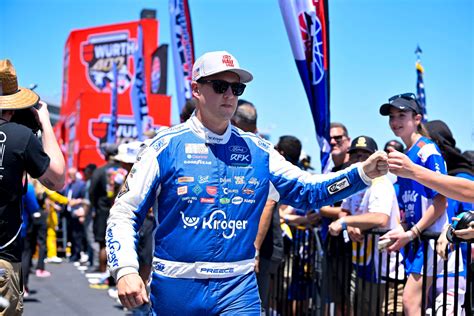
Jordin Sparks’ rendition of the national anthem at the 108th Indianapolis 500 captivated audiences, overshadowing pre-race anticipation and drawing widespread acclaim for its powerful delivery.
Indianapolis, IN – Jordin Sparks delivered a stirring performance of “The Star-Spangled Banner” at the 108th Indianapolis 500 on Sunday, immediately becoming one of the day’s biggest highlights, even before the engines roared to life. Sparks’ rendition, filled with both power and grace, garnered widespread positive reactions online and from the massive crowd gathered at the Indianapolis Motor Speedway, eclipsing any potential controversies or debates surrounding the appropriateness of the anthem itself and firmly placing the focus on her undeniable talent.
The pressure was palpable as Sparks stepped onto the stage. Performing the national anthem at the Indy 500 is a tradition steeped in history and significance, a moment that combines patriotism with the thrill of one of motorsport’s most iconic races. The performance is routinely broadcast to a global audience, making it a high-stakes showcase for any artist. Sparks, however, appeared unfazed, delivering a rendition that balanced respect for the traditional melody with her own unique vocal style.
Social media erupted almost immediately after Sparks concluded the final note. Comments ranged from admiration for her vocal control to appreciation for the evident emotion she poured into the song. Many viewers remarked that her performance stood out as particularly memorable compared to some previous renditions, with some even suggesting it was among the best in recent Indy 500 history.
“That was amazing,” one user wrote on X, formerly known as Twitter, a sentiment echoed by countless others. The performance effectively unified a crowd of hundreds of thousands, setting a tone of collective pride and excitement before the race began.
The decision to invite Sparks to sing the national anthem this year was met with anticipation from many fans, given her history of powerful vocal performances. She first gained national recognition as the winner of “American Idol” in 2007 and has since built a successful career as a singer, songwriter, and actress. Her experience performing in front of large audiences clearly shone through during the Indy 500, further solidifying her reputation as a seasoned performer.
Beyond the immediate reaction, Sparks’ performance carried a deeper significance. In a time often marked by division and political polarization, the national anthem can sometimes become a flashpoint for controversy. However, Sparks managed to transcend potential debates by delivering a performance that resonated with a broad audience, emphasizing unity and shared national pride.
Her interpretation of the anthem included subtle vocal embellishments that showcased her range and artistry without detracting from the song’s core message. It was a carefully calibrated performance that honored tradition while also bringing a fresh perspective to a familiar melody.
Sparks’ preparation for the event was meticulous, according to sources close to her. She understood the magnitude of the event and the importance of delivering a performance that would honor both the country and the racing tradition. This dedication was evident in the polished and professional quality of her rendition.
Moreover, the overwhelmingly positive response to Sparks’ performance highlights the power of music to unite people and evoke shared emotions. In the context of the Indy 500, a race that brings together fans from all walks of life, the national anthem serves as a moment of collective reflection and anticipation. Sparks’ ability to connect with the audience on such a deep level underscores the importance of selecting performers who can deliver a rendition that is both technically proficient and emotionally resonant.
The Indianapolis 500 has a long and storied history of memorable national anthem performances. Over the years, numerous artists have taken to the stage to sing “The Star-Spangled Banner,” each bringing their own unique style and interpretation to the song. Some performances have become legendary, while others have faded into obscurity. What sets Sparks’ rendition apart is the combination of her vocal talent, her stage presence, and the overwhelmingly positive reaction from the audience.
The Indy 500 is more than just a race; it is a cultural event that brings together people from all over the world. The pre-race ceremonies, including the national anthem performance, are an integral part of the Indy 500 experience. These ceremonies serve to honor the traditions of the race, pay tribute to the men and women who serve in the armed forces, and set the stage for the thrilling competition to come. Jordin Sparks’ performance effectively encapsulated all of these elements, setting a high bar for future national anthem renditions at the Indianapolis 500.
In conclusion, Jordin Sparks’ performance of the national anthem at the 108th Indianapolis 500 was a resounding success. Her powerful vocals, combined with her evident passion for the song, captivated the audience and set a tone of unity and excitement before the race. The overwhelmingly positive response to her performance underscores the importance of selecting performers who can deliver a rendition that is both technically proficient and emotionally resonant. Sparks’ performance will undoubtedly be remembered as one of the highlights of this year’s Indy 500, further solidifying her reputation as a talented and versatile performer. She not only delivered a memorable performance but also reaffirmed the unifying power of music in a nation often divided. Her rendition was a testament to her talent and the enduring appeal of “The Star-Spangled Banner” when delivered with sincerity and skill.
Expanded Context and Background Information
The Indianapolis 500, often referred to simply as the “Indy 500,” is one of the most prestigious and iconic races in the world. Held annually at the Indianapolis Motor Speedway (IMS) in Speedway, Indiana, the race is a cornerstone of the American open-wheel racing season and is part of the Triple Crown of Motorsport, alongside the Monaco Grand Prix and the 24 Hours of Le Mans.
The race’s history dates back to 1911 when the first Indy 500 was held. The idea originated from a need to showcase the automotive industry in Indiana, which was then a hub for automobile manufacturing. Carl G. Fisher, James A. Allison, Arthur Newby, and Frank Wheeler, the founders of the Indianapolis Motor Speedway, envisioned a long-distance race that would test the limits of both drivers and machines.
The initial race in 1911 was won by Ray Harroun, driving a Marmon “Wasp,” in a time of 6 hours and 42 minutes. The race quickly gained popularity, attracting large crowds and becoming a major event in the American sporting calendar. Over the years, the Indy 500 has evolved significantly, with changes in car design, safety regulations, and the overall racing experience.
The Indianapolis Motor Speedway itself is a historic venue, known for its massive size and unique rectangular oval layout. The track is 2.5 miles (4.0 km) long, and the race requires drivers to complete 200 laps, totaling 500 miles. The IMS is the highest-capacity sports venue in the world, with a seating capacity of over 250,000 permanent seats and the ability to accommodate over 400,000 spectators with infield access.
The Indy 500 is not just a race; it is a cultural event that brings together people from all walks of life. The race weekend is filled with various activities, including practice sessions, qualifying rounds, and numerous social events. The atmosphere is electric, with fans camping out for days to secure the best viewing spots and participating in various traditions that have become synonymous with the Indy 500 experience.
One of the most enduring traditions is the singing of “Back Home Again in Indiana,” which has been performed before the race for decades. This song, along with the national anthem, serves as a moment of collective pride and unity, bringing together fans, drivers, and teams in a shared celebration of American culture and racing heritage.
The pre-race ceremonies at the Indy 500 are an integral part of the event, honoring the traditions of the race and paying tribute to the men and women who serve in the armed forces. These ceremonies set the stage for the thrilling competition to come and contribute to the overall spectacle of the Indy 500.
Over the years, numerous celebrities and dignitaries have participated in the pre-race ceremonies, including actors, musicians, and political figures. Their presence adds to the prestige of the event and helps to draw even more attention to the Indy 500.
The selection of the national anthem performer is a significant decision, as the performance sets the tone for the entire race. The ideal performer is someone who can deliver a rendition that is both technically proficient and emotionally resonant, capturing the spirit of patriotism and the excitement of the race. Jordin Sparks’ performance in 2024 exemplified these qualities, earning her widespread acclaim and solidifying her place in Indy 500 history.
The Indy 500 has faced its share of challenges and controversies over the years. Safety concerns have always been a primary focus, and numerous changes have been made to car design and track regulations to improve driver safety. Despite these efforts, accidents and injuries have occurred, highlighting the inherent risks of motorsport.
The race has also been affected by economic downturns and social changes. During World War I and World War II, the Indy 500 was suspended, and the Speedway was used for military purposes. In recent years, the race has faced competition from other motorsport events and changing demographics, requiring the organizers to adapt and innovate to maintain its relevance and appeal.
Despite these challenges, the Indy 500 has remained a fixture of American culture, attracting millions of fans each year. The race continues to evolve, with new technologies and strategies being developed to push the limits of speed and performance. The Indy 500 is a testament to the enduring appeal of motorsport and the human desire to push boundaries.
The drivers who compete in the Indy 500 are among the most skilled and daring in the world. They come from diverse backgrounds and represent different racing disciplines, but they all share a common goal: to win the coveted Borg-Warner Trophy, which is awarded to the winner of the race.
The Borg-Warner Trophy is a symbol of excellence in motorsport, and it is one of the most prestigious awards in racing. The trophy is made of sterling silver and features the likenesses of every Indy 500 winner since 1911. Winning the Indy 500 is a life-changing achievement for any driver, and it solidifies their place in racing history.
The teams that compete in the Indy 500 are also among the best in the world. They consist of engineers, mechanics, and strategists who work tirelessly to prepare their cars for the race. The teams invest millions of dollars in research and development, constantly seeking ways to improve their performance and gain a competitive edge.
The Indy 500 is a complex and demanding event that requires meticulous planning and execution. The teams must carefully manage their resources, making strategic decisions about pit stops, tire changes, and fuel consumption. The race is often won or lost in the pits, and the teams must be prepared to react quickly to changing conditions.
The Indy 500 is also a showcase for innovation and technology. Over the years, numerous advancements in automotive engineering have been developed and tested at the Speedway. These advancements have often found their way into consumer vehicles, improving safety, performance, and efficiency.
The Indy 500 is a celebration of American ingenuity and innovation, and it continues to inspire engineers and designers to push the boundaries of what is possible. The race is a testament to the power of human creativity and the relentless pursuit of excellence.
In recent years, the Indy 500 has also become more environmentally conscious. The race organizers have implemented various initiatives to reduce the environmental impact of the event, including promoting the use of biofuels, reducing waste, and conserving energy.
The Indy 500 is committed to sustainability, and it is working to become a more environmentally responsible event. The race organizers believe that it is important to protect the environment for future generations, and they are committed to making the Indy 500 a sustainable event.
The Indy 500 is a global event, attracting fans and participants from all over the world. The race is broadcast to millions of viewers in hundreds of countries, and it is one of the most watched motorsport events in the world.
The Indy 500 is a symbol of American culture and innovation, and it is a source of pride for the city of Indianapolis and the state of Indiana. The race is a testament to the enduring appeal of motorsport and the human desire to push boundaries.
The Significance of the National Anthem Performance
The performance of the national anthem at the Indy 500 is a deeply symbolic moment that carries significant weight for both the participants and the audience. It represents a unifying act of patriotism, honoring the nation’s values and history while setting a tone of respect and anticipation for the race ahead. The choice of performer is carefully considered, often selecting artists who can deliver a rendition that is both technically impressive and emotionally resonant.
A successful national anthem performance can transcend the typical pre-race formalities and become a memorable part of the Indy 500 experience. It can evoke a sense of shared identity and pride among the diverse crowd, setting a positive and uplifting atmosphere. Conversely, a poorly executed performance can be perceived as disrespectful or underwhelming, potentially dampening the enthusiasm before the race.
The national anthem performance is not merely a musical interlude; it is a cultural ritual that reinforces the connection between the Indy 500 and American values. It provides an opportunity for reflection and gratitude, especially towards those who have served in the armed forces. The performance is often accompanied by displays of patriotism, such as the unfurling of a giant American flag or a flyover by military aircraft, further enhancing the emotional impact.
Jordin Sparks’ rendition in 2024 stood out for its ability to connect with the audience on multiple levels. Her powerful vocals and heartfelt delivery resonated with viewers, transcending any potential political divides and focusing attention on the shared experience of national pride. The overwhelmingly positive response to her performance underscores the importance of selecting artists who can deliver a rendition that is both technically proficient and emotionally authentic.
The national anthem performance at the Indy 500 is a tradition that has evolved over time, reflecting changing cultural norms and artistic styles. While the core message of patriotism remains constant, the interpretation of the anthem can vary depending on the performer and the context of the event.
In recent years, there has been increased scrutiny of national anthem performances at sporting events, with some renditions sparking controversy or debate. However, Sparks’ performance in 2024 avoided any such pitfalls, instead earning widespread praise for its respectful and uplifting tone.
The national anthem performance at the Indy 500 is a moment of national significance, and the choice of performer is a decision that carries considerable weight. Jordin Sparks’ rendition in 2024 exemplified the qualities of a successful performance, earning her accolades and solidifying her place in Indy 500 history.
FAQ About Jordin Sparks’ National Anthem Performance at the Indy 500:
-
What was the overall reaction to Jordin Sparks’ national anthem performance at the 2024 Indy 500?
The reaction to Jordin Sparks’ performance was overwhelmingly positive. Social media erupted with praise for her powerful vocals and the emotion she conveyed, with many calling it one of the best national anthem renditions in recent Indy 500 history. The live audience at the Indianapolis Motor Speedway also responded enthusiastically.
-
Why was Jordin Sparks chosen to sing the national anthem at the Indy 500?
Jordin Sparks was chosen due to her proven vocal talent, her experience performing in front of large audiences, and her ability to connect with listeners on an emotional level. Her background as the winner of “American Idol” and her subsequent successful career as a singer and actress made her a well-known and respected performer.
-
Did Jordin Sparks’ performance differ significantly from previous national anthem renditions at the Indy 500?
While every performer brings their unique style to the national anthem, Jordin Sparks’ rendition was notable for its balance of respect for the traditional melody and her own vocal artistry. She incorporated subtle vocal embellishments that showcased her range without detracting from the song’s core message, creating a performance that resonated with a broad audience.
-
How important is the national anthem performance to the overall Indy 500 event?
The national anthem performance is a crucial part of the Indy 500 pre-race ceremonies. It serves as a moment of unity and patriotism, honoring the nation’s values and setting the stage for the race. It also pays tribute to the men and women who serve in the armed forces. The performance contributes to the overall atmosphere and emotional impact of the event.
-
What impact did Jordin Sparks’ performance have on the broader context of national anthem performances at sporting events?
In a time when national anthem performances at sporting events can sometimes become controversial, Jordin Sparks’ rendition was praised for its ability to transcend potential debates and focus on shared national pride. Her performance demonstrated the power of music to unite people and evoke positive emotions, reaffirming the importance of selecting performers who can deliver technically proficient and emotionally resonant renditions.
-
What preparations did Jordin Sparks undertake before singing the national anthem at the Indy 500?
Sources close to Jordin Sparks indicated that she meticulously prepared for the event, understanding its magnitude and the importance of delivering a performance that would honor both the country and the racing tradition. This dedication was evident in the polished and professional quality of her rendition.
-
Can you provide more detail about the history of the Indianapolis 500 and its cultural significance?
The Indianapolis 500, dating back to 1911, is a cornerstone of American open-wheel racing and part of the Triple Crown of Motorsport. Held at the Indianapolis Motor Speedway, it attracts hundreds of thousands of spectators and is a cultural event that brings together people from all walks of life. The pre-race ceremonies, including the national anthem and “Back Home Again in Indiana,” are integral to the Indy 500 experience, honoring traditions and paying tribute to the armed forces.
-
What are some of the traditions associated with the Indy 500, besides the national anthem performance?
Besides the national anthem, other traditions include the singing of “Back Home Again in Indiana,” the release of balloons, the winner drinking milk in Victory Lane, and the presentation of the Borg-Warner Trophy. These traditions contribute to the unique atmosphere and cultural significance of the Indy 500.
-
How has the Indy 500 evolved over the years in terms of safety and technology?
Over the years, the Indy 500 has seen significant advancements in safety regulations and car design to improve driver safety. There have also been numerous technological innovations, such as improved aerodynamics, engine technology, and tire design, aimed at pushing the limits of speed and performance.
-
How has the Indy 500 addressed environmental concerns in recent years?
The Indy 500 has implemented various initiatives to reduce its environmental impact, including promoting the use of biofuels, reducing waste, and conserving energy. These efforts demonstrate a commitment to sustainability and environmental responsibility.
-
What is the Borg-Warner Trophy, and why is it so important to Indy 500 winners?
The Borg-Warner Trophy is a sterling silver trophy awarded to the winner of the Indy 500. It features the likenesses of every Indy 500 winner since 1911 and is a symbol of excellence in motorsport. Winning the Indy 500 and receiving the Borg-Warner Trophy is a life-changing achievement for any driver, solidifying their place in racing history.
-
How do teams prepare for the Indy 500, and what are some of the strategic decisions they must make during the race?
Teams invest millions of dollars in research and development to prepare their cars for the Indy 500. They must carefully manage resources, making strategic decisions about pit stops, tire changes, and fuel consumption. The race is often won or lost in the pits, requiring teams to react quickly to changing conditions.
-
How has the Indy 500 contributed to advancements in automotive engineering?
The Indy 500 has served as a testing ground for numerous advancements in automotive engineering, which have often found their way into consumer vehicles. These advancements have improved safety, performance, and efficiency, making the Indy 500 a significant contributor to the automotive industry.
-
What are some of the challenges and controversies that the Indy 500 has faced throughout its history?
The Indy 500 has faced challenges such as safety concerns, economic downturns, and social changes. It was suspended during World War I and World War II, and in recent years, it has faced competition from other motorsport events and changing demographics.
-
How does the Indy 500 maintain its relevance and appeal in the modern era?
To maintain its relevance, the Indy 500 continues to adapt and innovate by incorporating new technologies, improving the fan experience, and promoting environmental sustainability. The race remains a celebration of American culture, innovation, and the human desire to push boundaries.
-
Who were the founders of the Indianapolis Motor Speedway, and what was their vision for the Indy 500?
The founders of the Indianapolis Motor Speedway were Carl G. Fisher, James A. Allison, Arthur Newby, and Frank Wheeler. They envisioned a long-distance race that would showcase the automotive industry in Indiana and test the limits of both drivers and machines.
-
How does the Indianapolis 500 contribute to the economy of Indianapolis and the state of Indiana?
The Indianapolis 500 is a major economic driver for Indianapolis and the state of Indiana, generating millions of dollars in revenue through tourism, hospitality, and related industries. The race attracts visitors from all over the world, boosting the local economy and supporting jobs.
-
What is the significance of the phrase “Gentlemen, start your engines!” at the Indy 500?
“Gentlemen, start your engines!” is a traditional command given before the start of the Indy 500, signaling the drivers to begin their engines and prepare for the race. It is a symbolic moment that adds to the excitement and anticipation of the event. Though the phrase has remained largely unchanged, there have been discussions about making it more inclusive, reflecting the increasing diversity of drivers and participants in the race.
-
How does the Indianapolis 500 compare to other major motorsport events, such as the Monaco Grand Prix and the 24 Hours of Le Mans?
The Indianapolis 500, Monaco Grand Prix, and 24 Hours of Le Mans are considered the Triple Crown of Motorsport, representing three of the most prestigious and challenging races in the world. Each event has its unique characteristics and traditions, but they all share a common goal of testing the limits of drivers and machines. The Indy 500 is known for its oval track and high speeds, while the Monaco Grand Prix is famous for its tight street circuit, and the 24 Hours of Le Mans is renowned for its endurance format.
-
How has the role of women in the Indy 500 evolved over the years?
The role of women in the Indy 500 has evolved significantly over the years, with more women participating as drivers, engineers, and team members. While there have been challenges and barriers to overcome, women have made important contributions to the sport and continue to break barriers and inspire future generations. Notable female drivers include Danica Patrick, Sarah Fisher, and Simona de Silvestro.









